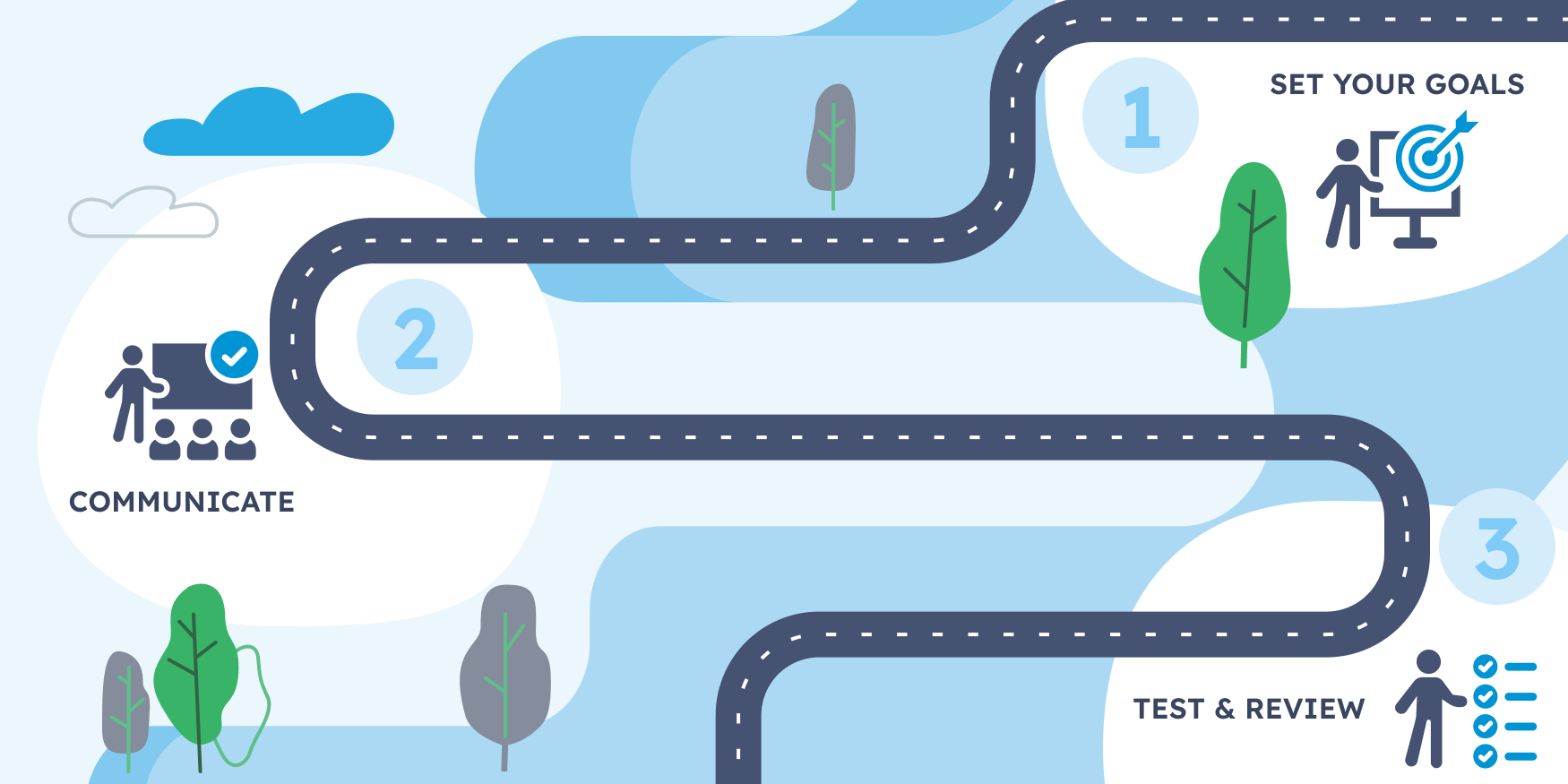Time Tracking Software: 6 Ways It Helps Your Business Growth
Are you weighing out all pros and cons of using time-tracking software in your company? Read these seven ways on how time-tracking can benefit your...


Time management should be an essential component of running a successful business.
Gathering valuable insights about the allocated time allows you to analyze it and eventually optimize it. This will result in a series of benefits, such as meeting deadlines, improving efficiency, being more productive, and delivering better work.
Introducing a time-tracking tool to the team could be challenging: some team members might have preconceived notions of what time tracking is and how it works. They may assume you'll use it to "spy" on them or micromanage their work.
That's why it's necessary to introduce the new tool appropriately and dissipate their fears with the correct information from the start.
The following tips are a good starting point for any organization that would like to adopt time tracking software, whether you're a small business or a big one.
Here is an overview of the most effective path:
#1 Define goals & success criteria
Different industries might have various reasons to start using time tracking software and different expectations for the outcomes, depending on size and industry.
At this stage, it's essential to set clear goals about what you would like to achieve by introducing a time tracking tool: for example, would you like to increase productivity? Monitor team's performance? Bill your clients more accurately?
List your objective and share them with all the stakeholders.
For inspiration, check out our list of example scenarios for each department.
Suppose you were used to tracking time with Excel spreadsheets or paper forms. In that case, you might have realized by now that those methods are time-wasting, inefficient, and, most importantly, don't provide any actionable insights. So, your next step is to choose the right time tracking app for your team. This tool should be simple, intelligent, and easy to use.
Also, make sure that the tool you choose allows employees to track time wherever they are: on the field, meeting the clients, or switching between multiple projects. Make it easier for them to track time by activating the integrations with the other software they use and encourage using the time tracking app on their mobile phone.
That's why whether your team works fully remotely, in-office, or in hybrid mode, Timeneye is the perfect tool for you. For more information about Timeneye, check out our feature page dedicated to Team management.
Otherwise, if you want to see Timeneye in action, Sign Up for a free 14-day trial.
Like any other company's decision, communication is vital. Organize a meeting with all the stakeholders, managers, and end-users to create the initial awareness of the changes you will be making and get them excited about it.
Tell them about the time-tracking benefits (more on this later) and what the outcome should be. We have prepared a template with some slides you could use during this meeting, but you should add your expectations for each department and specify what success would look like for each user scenario.
Towards the end, ask who would be interested in being part of the pilot team. These people will be the first to test the time-tracking tool and, in the next future, train their peers.
Initially, some employees might see time tracking as a meaningless practice that only takes up their time on an already busy day. If you are trying to get your team on board right from the start, you should make them understand the reasons behind your decision.
In fact, time tracking can have several benefits for employees, including:
It's essential to specify that the intention is not to look over people’s shoulders, but to become aware of how the working time is utilized in the organization and eventually optimize the process. Initially, your colleagues might be concerned that the new software will track everything they do in the office, such as the time spent checking emails or the length of their coffee breaks.
Assure your employees that the ultimate goal of a time tracking tool is to provide a big picture of how time and resources are distributed during a project life cycle.
With Timeneye, everyone's privacy is protected: it doesn't support screenshots, keystroke counts, GPS tracking, and other invasive monitoring tools. To learn more about this, read Our Privacy Promise.
Start recruiting a small group of like-minded people interested in the time-tracking benefits and may also be accountable for the tool implementation.
No matter what size or industry your organization may be, early adopters share certain traits: interested in technology, collaborative by nature, willing to try something new, and able to give constructive feedback. Did any of your co-workers come to mind? Great! These people will be the first to test the software and, in the next future, train their peers.
We recommend starting with 2 or 3 real-life projects to get the pulse of how it works. Also, set permission levels and roles for your team members to replicate the company's hierarchical structure. Having a heterogeneous group of people with whom you can test the new tool in all its functionalities could help troubleshoot potential problems.
For a more extensive read on this subject, download our free eBook:
A step-by-step roadmap to successfully rollout a time-tracking software in your company
Provide training on how to use the time tracking tool and ensure that employees understand why it is important to track their time accurately. Set aside some time to give everyone a hands-on training session, preferably in small groups. This way, they’ll have the opportunity to explore all the key features and get their questions answered.
Good practices for a smooth start:
Ensure everybody is in contact with the internal Help Desk or IT specialist in case of technical problems.
Encourage all employees to contact their Group Manager or Admin for further training or technical assistance.
Create a specific channel on your Microsoft Teams or Slack where people can ask questions and exchange tips and opinions.
Learn more about How Timeneye integrates with Microsoft Teams.
Getting new software aboard may take a lot of work. But that's OK! Leave enough time, depending on the company size, for everybody to get acquainted with the new software.
Some issues might emerge in the first few weeks of usage, so address them promptly and adjust your workspace.
Monitor the implementation of time tracking software and collect employee feedback with an anonymous survey. Use this feedback to adjust the process and, if necessary, organize a second round of training sessions.
Use your learnings, talented managers, and early adopters to support your organization's broad-scale deployment. Once your workspace is set up, invite the rest of the team to join you on the platform.
If you are not ready to onboard the whole company, you could proceed department by department.
Best practice: empower your early adopters and delegate them the responsibility of training their peers by organizing demo sessions.
For more details about a phased approach, check out our eBook:
A step-by-step roadmap to successfully rollout a time-tracking software in your company
Consistency will be the key: tracking time daily will ensure you'll have enough data to complete the necessary analysis.
With Timeneye, you can set automatic reminders to make tracking time part of their working routine.
The best way to make your team commit to the initiative is for it to show results: when you have enough time tracked, run your first productivity report. Reports should give you a complete overview of the total time spent on each client, project, task, billable hours, and team member.
It's essential to update your team regularly, ideally at a fixed time each week or sprint. Highlight the benefits of this new business practice, and remember to praise any positive effort!
As your employees reap the benefits of improved productivity, better time management, and a more efficient workflow, they will be motivated to take the time each day to fill their timesheets.
Conclusion
Implementing a time tracking tool like Timeneye can transform the way your team works, offering clarity, productivity, and efficiency.
Define clear goals, choose the right tool, communicate changes effectively, and provide thorough training to ensure a successful rollout. Highlight benefits, address concerns openly, and monitor success regularly.
Ready to take your team's productivity to the next level? Sign up for a free 14-day trial of Timeneye and experience these benefits firsthand!
Here are two options to kickstart your journey toward enhanced productivity:
1) Try Timeneye for free. If you’d like to see Timeneye in action and possibly test it with your team, you can start your free trial today.
2) Schedule a demo session with us, where we can show you around, answer your questions, and help you see if Timeneye is the right tool for your company.
Are you weighing out all pros and cons of using time-tracking software in your company? Read these seven ways on how time-tracking can benefit your...
Microsoft Teams time tracking. Here the best time tracking ways to track time and keep an eye on time on Teams.
Time tracking for GitHub: learn how Timeneye lets you track time inside your GitHub issues thanks to the Timeneye Browser Widget.